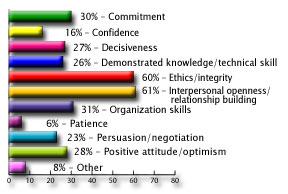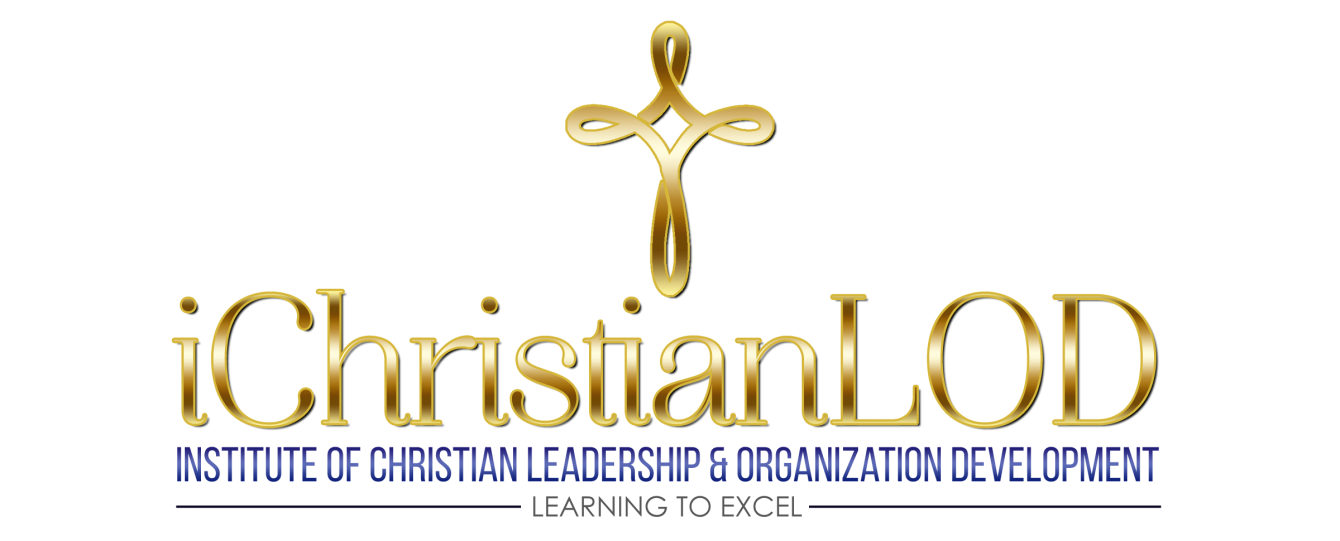 How a Leader Develops
How a Leader Develops
Experience alone does not add to or take away from the development process of a leader. What that leader does with the experience determines how he benefits and develops from it. Experiential learning theorists believe the most effective way to grow from experience is to use the Action-Observation-Reflection (A-O-R) Model. Growth from the A-O-R Model only occurs when one observes their actions and reflects on the consequences of those actions (Hughes, Ginnett, Curphy, 2012, p.47).
Feedback
Another way a leader develops from experience is through feedback. Obtaining constructive feedback is not necessarily an easy task. According to Hughes et al., (2012) the leader must convince others that they can safely approach without fear of retaliation, and that you genuinely want their input. When choosing an appropriate method for getting feedback, you might consider the size of the group, the level of trust within the group, and the relationship between the manager and subordinates.
Outside Opportunities
Leaders can also look for opportunities outside their comfort zones, what Hughes et al. (2012) call the 10-percent stretch. This is where leaders purposely volunteer for assignments they typically would not pursue. Three major benefits result from stretching: Fear of attempting new things decreases; you acquire new skills; and subordinates are inspired to see a leader willing to learn on-the-job. It shows humility and places value on effort and risk-taking.
When leaders recognize they can learn something from everyone, whether it be by asking questions or by simply observing how others handle particular situations, they open themselves to a reservoir of opportunities from which to learn. For instance, a person who has been doing a simple task for several years has probably learned some valuable shortcuts or mistakes to avoid.
Journaling
Journaling experiences can have tremendous value to the leader’s development. Reading journal entries can help view an experience objectively. Instead of looking at the experience as a participant, you are able to view things from the outside in, giving a totally different perspective. Journaling also enables you to go back and see how your thinking evolved to where it is today. If your thoughts took an illogical turn, you can see that turn in your journals. It also acts as a repository for your ideas and successes that may be valuable in your future (Hughes et al., 2012).
Following
Leader development can actually begin in the role of follower. Leadership is influence, and followers can build influence among their peers by participating on committees and working with others on projects. These are equally excellent opportunities for building technical skills, such as budgeting and planning. Having positive influence among your peers and increasing technical competence, positions you in a favorable light with superiors, which can lead to promotion, especially since that positive influence can be galvanized by superiors for the benefit of the entire organization.
Developing leader and technical skills must be an ongoing process, where the practitioner has knowledge of which development needs are most important to the achievement of their goals, and a plan for achieving those needs. This ongoing process is facilitated through development planning which begins with a GAPS analysis, which identifies and prioritizes development needs. The second part of development planning is a plan describing how you will arrive to your final destination (Hughes et al., 2012).
References
Hughes, R.L., Ginnett, R.C., Curphy, G.J. (2012). Leadership enhancing the lessons of experience seventh edition. McGraw-Hill/Irwin. New York, NY.
———————————————————
Managing Opposition to Change
 We all know what it feels like to have a great idea that we know will absolutely make the organization better; and then comes the opposition. When opposition shows up, we brace ourselves for the battle that we knew would come. There is a different perspective and approach to opposition that can make you a more effective leader, in addition to helping you accomplish your goals. As Daft and Marcic (2011) explain, this approach begins by understanding the four major reasons that people resist change in the first place:
We all know what it feels like to have a great idea that we know will absolutely make the organization better; and then comes the opposition. When opposition shows up, we brace ourselves for the battle that we knew would come. There is a different perspective and approach to opposition that can make you a more effective leader, in addition to helping you accomplish your goals. As Daft and Marcic (2011) explain, this approach begins by understanding the four major reasons that people resist change in the first place:
- They believe the change is a threat to their own self-interest;
- A lack of understanding and/or trust;
- Fear created by uncertainty; and
- Different goals.
When we understand why people are resisting, we know how to meet that resistance. If the people believe the change will cause them a loss of power, authority, money, or whatever, they will resist. You must then show them how the change will benefit them. If they must give up something, show them what they will get in exchange.
When there is a lack of understanding or trust, fill in the blanks for them. Understanding their resistance from their perspective, allows you to do that. That means you have to actively listen to them. If it is a lack of genuine trust, you may have to back up, slow down, and build a level of trust before you attempt to successfully change their world.
Uncertainty refers to fear caused by a lack of information. When we don’t know how something will affect us, it causes anxiety, especially when it involves things like income and promotion. When we attempt to initiate change, it is important to thoroughly consider and provide information that will lessen the initial level of anxiety. Plan your change before you try to work your change by anticipating and answering questions first. Lastly, sometimes people simply have different goals.
View this as a great opportunity to build relationship through open dialogue. Negotiate, and make it a win-win for everyone. People are usually willing to give up something if they know they will get something else in return. When we approach opposition as an opportunity for dialogue, it sharpens our skills, which makes us a better leader and allows everyone to win.
Daft, R.L., Marcic, D. (2011). Understanding management 7e. South-Western Cengage Learning. Mason, OH
Send me your email, dianaforhim@gmail.com, and I will personally add you to our list. Or, you can visit our website to join, Diana For Him. I promise you, we will not send you tons of emails.
========================================================
 Five Characteristics of learning leaders
Five Characteristics of learning leaders
There are five characteristics learning leaders of 21st-Century organizations must possess to be successful: perception and insight, motivation, emotional strength, cultural innovation, and participatory influence.
Perception and insight
Cultural assumptions are unconscious beliefs and values that are shared by the members of an organization that determine behavior, perception, thought, and feelings of the members of that organization. Because they are unconscious, the learning leader must learn to be perceptive in understanding the concept of cultural issues. This includes how to analyze, impact, and/or change the dysfunctional elements of a culture. Driskill and Brenton (2011) explain that cultural elements are not the culture itself; they only create the culture and reveal it. This means that the leader must possess the skills to observe cultural elements, which could be symbols, stories, values, artifacts, rituals, or rules, and discern insightful meanings as to what those elements say about the underlying assumptions of its members, how those assumptions are manifested in the attitudes of its members, and the impact of those assumptions on the success or failure of the organization. Driskill and Brenton call these elements, “surface manifestations of culture that offer insights into deeper layers of assumptions and values” (Driskill, Brenton, 2011, p.41).
Motivation
Learning leaders must be self-motivated purpose-driven people, motivated by their commitment to the well-being and success of the organization and its members. This commitment to the organization becomes the impetus for initiating the pa
inful process of confronting cultural issues associated with one’s own organization, and beginning the arduous task of cultural and human behavioral changes that are accomplished through unfreezing, intervention, refreezing, and implementation (Daft, Marcic, 2011). Schein states that these leaders must learn to skillfully communicate their dedication and commitment to the organization and to others, above and beyond their own personal success (Schein, 2010).
Emotional strength
People resist change for a variety of reasons. They may believe the change will conflict with their own self-interests in some way. They may lack an understanding about the change and trust. There may be levels of uncertainty regarding the change. Some may worry that the change may differ from their own goals and plans (Daft, Marcic, 2011). Attempts to change organizational culture will produce anxiety as predictability is removed, and subject the leader to be a target of member anger, discontentment, and criticism. The leader must learn to be thick-skinned, capable of bearing the targeted abuse, and always ready to re-communicate the well-being of the organization as the primary reason for the proposed change (Schein, 2010).
Ability to Change the Cultural Assumptions
Any cultural assumption that is being targeted for replacement, must be replaced or redefined by the learning leader, with a new innovative value or concept, which must be skillfully reiterated to its members. The leader must therefore not only possess the ability to know what is culturally inadequate, but he or she
must also have the ability of deciding what the proper assumption should be, and successfully ensuring that the new assumption is properly embedded into the organizational culture (Schein, 2010).
Participatory Influence
The learning leader must be fully engaged in the process with others in the organizational community, by learning to genuinely listen to their concerns and solicit their insights, ensuring them that their concerns are important to him. Schein states that the end result of cultural change is that the assumption is redefined in the minds of its members, which will require full and active participation on their part. This will require skillful relationship management on the part of the learning leader, and humility in recognizing that he or she does not possess all the answers (Schein, 2010).
References
Daft, R.L., Marcic, D. (2011). Understanding management 7th edition. South-Western Cengage Learning. Mason, OH 45040.
Driskill, G.W., Brenton, A.L. (2011). Organizational culture in action a cultural analysis.workbook 2nd edition. Sage Publications, Inc. Thousand Oaks, CA 91320.
Schein, E.H. (2010). Organizational culture and leadership fourth edition. John Wiley & Sons, Inc. San Francisco, CA 94103-1741.
========================================================

FIVE COMMON TYPES OF POWER
Power is a tool that leaders use to influence the attitudes, behaviors, and even the values of subordinates to achieve organizational goals and objectives. They may use it to change unwanted attitudes and behaviors, or to encourage attitudes they desire. Most people have at one time worked with co-workers who had attitudes that were contrary to productivity and team unity. Leaders attempt to discourage those undesirable behaviors through wise and appropriate use of power, hoping to extract some intrinsic value that can be found in most people, for the benefit of both the individual’s success and the success of the organization. Hughes, Ginnett and Curphy (2012) define power as, “the capacity to cause change”. To be successful, leaders must understand the different types of power, as well as how and when it is appropriate to use each type.
Five Common Types of Power
Power comes from different sources. Some power is given, and some is earned. For example, Expert power is earned by achieving a high degree of knowledge or skill in a particular area. Because it is earned, it can be obtained and exercised by leaders as well as followers. Expert power is also affected by situation, since a person can be an expert in one situation and not an expert in another. A primary source of expert power is often education, but it can also be attained by way of tenure and experience. People typically listen attentively to the person they believe or know to have expert power.
Referent power is power that comes from the strength of interpersonal relationship. Like expert power, it too is earned through consistency and faithfulness, and received in exchange for meeting certain interpersonal needs of one party in the relationship. Typically, referent power is very influential because it is relational. Just as we listen to those with expert power, we draw close to those who possess referent power. Its relational nature makes it vulnerable to loss, as opposed to expert power. Authority figures can demand a subordinate to do something, but they cannot demand the high degree of commitment that is typically associated with referent power. It is most powerful when used in conjunction with legitimate power.
Legitimate power is formal authoritative power that one has as a result of their position or title within an organization. Subordinates comply with legitimate power out of obligation, even when they don’t believe it is deserved. Unlike referent power, where people commit and cooperate because of their admiration likes and dislikes are not a part of the legitimate power equation. When you accept a position in an organization, you accept the legitimate power the organization has confers to certain positions. Legitimate power is the most valuable type of power to use in times of crises, when quick decisions need to be made and fast action is required. But it does not belong only to leaders. Employees also have a degree of legitimate power conferred to them through labor unions and laws, and regulations.
Reward power is an effective tool and a very popular method of influencing people through the control of desired resources. Leaders reward subordinates with praise and recognition, bonuses and promotions for doing well. Followers also reward leaders with admiration, loyalty, and commitment to show their appreciation. Reward power is most effective when the rewards are valued by the recipient, which means the giver has to have knowledge of what the recipient values. It must also be used with caution, precision and consistency. Leaders should decide on what performance they will reward, and how it will be rewarded across the board.
Coercive power is actually the opposite of reward power, and uses the application of negative experiences to influence others, such as fear of punishment, or threat of loss of something valued. It can be as simple as a parent withholding the allowance of a teen, or as severe as a judge pronouncing a jail sentence. It can be very effective in managing behavior, but like reward power, it must be used with caution to avoid abuse (Hughes, Ginnett, & Curphy, 2012).
Hughes, R. L., Ginnett, R. C., Curphy, G. J. (2012). Leadership enhancing the lessons of experience seventh edition. McGraw-Hill Irwin. New York, NY.
==========================================================

Transformational Leadership
Your Key To Success In The 21st Century
Transformational leadership is a leadership perspective that changes organizations and its people for the better. It is based on the premise of higher values, qualities, and core beliefs, and is just the opposite of transactional leadership, which is based on mutual exchange between parties.
Transformational leaders begin with a dream or a grand vision of what can be, which is always better than what is. It is vision-driven leadership that is effectively communicated through sermons, speeches, slogans, and symbols. The effectiveness of the communication is what motivates people because it always envisions elevated standards. The value of these lofty standards provides the incentive for people to endure whatever pain is associated with the grand vision.
The leader not only communicates the vision, but he models it for others. In other words, he walks the talk. The closer he lives to the standards and values of the vision, the greater is his credibility. His credibility then becomes the source of commitment from others. True buy-in is generated as he persistently demonstrates honesty and integrity, and allows others to help shape and participate in the overall vision (McShane, Von Glinow, 2005).
Jesus Christ, was no doubt the Greatest Transformational Leader of all times. He came and announced his vision, which was the arrival and coming of a new kingdom that was unlike the old one. In the new Kingdom values were as different as they were better. Leaders were servants and not lords, the poor were blessed and not cursed, and it operated from a platform of love and obedience to the Father and to your fellow man.
Jesus communicated his Vision through sermons, parables, symbols, and artifacts that were familiar to the people of that day. He taught lofty principles and values of the new kingdom through parables.
He did not just talk the talk, like the Pharisees and the Scribes; he actually walked the talk and modeled his vision. He was so effective that people believed him and bought into his vision. The rest, of course, is history. He demonstrates a perfect example of Transformational Leadership.
perfect example of Transformational Leadership.
McShane, S.L., Von Glinow, M.A. (2005). Organizational behavior 3d ed. McGraw-Hill Companies, Inc. New York, NY.
The Church began over 2,000 years ago, and it’s still growing today! That means that Jesus knew something about building a successful organization.
Discover how Jesus managed information, major change, and conflict. A great read for anyone who desires to lead!
BUY NOW!
==========================================================
Quick Tips for Managing Everyday Conflict

Conflict is manageable when you understand the cause, and use definite strategies to resolve it.
First: Decide on your ultimate goal by isolating side issues
What do you really want to do? Isolate the conflict from side issues like what others want or think. Example. If you were a human resource manager seeking to fill a position, your primary goal would be to select the best candidate for the open position in the department. That means you may have to overlook who expects to get the position, or what others want.
Next: Ascertain the Real Source of the conflict
There are three main causes for most conflicts: personality differences, communication differences, and structural differences. To resolve a conflict, you have to clearly understand the real cause of the conflict. Personality differences involve personal idiosyncrasies, value and education differences, or individual chemistry that just doesn’t mix. Conflicts arising from personality differences are typically handled through education and tolerance training. Conflicts caused by communication differences are misunderstandings due to some type of cultural or age differences, or where people speak different languages. This requires training in effective communication. Conflicts caused by structural differences are the result of interactions between employees in different departments with different goals. Negotiation is key. If possible, make it a win-win for everybody.
Then: Choose the Best Conflict-Handling Style or strategy
There are five primary strategies for handling conflicts. Neither of the five always works best in every situation.
- Collaboration
- Compromise
- Avoidance
- Accommodation
- Forcing
Collaborating is a win-win style that looks for solutions where everyone wins. Everyone’s interests are addressed. It works best when time is not an issue and when the conflict is too important to be compromised.
Compromise is a style where everyone wins some and everyone loses some. It works best when both sides of the conflict are equal in power, or you need a quick fix to a complex problem.
Avoidance should be used for trivial conflicts. It often means taking the high road. It’s an ideal style when emotions are high and the potential for disruption is more costly than an immediate resolution.
Accommodation is a good choice when its important to maintain harmony in relationship. It means putting the other person’s needs and desires above your own, and it works well when the dispute is not that important to you. It also allows you to build points for the next dispute, which might be more important to you.
Forcing is a style used by people with formal authority to resolve a dispute. It works well when there is a shortage of time, or when unpopular actions need to be taken.
Oliver, J.M. et al. (2009). Interperson professional communication: National American University. Pearson Custom Publishing. United States of America.






